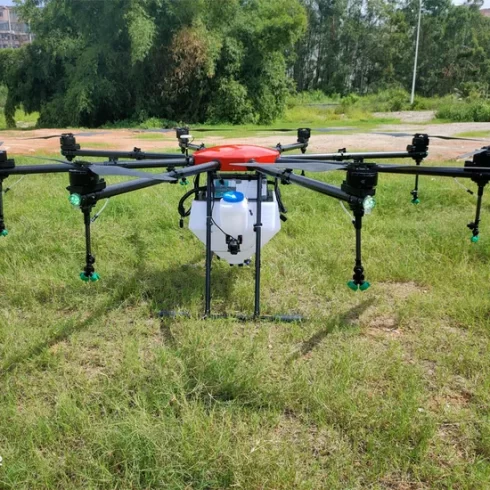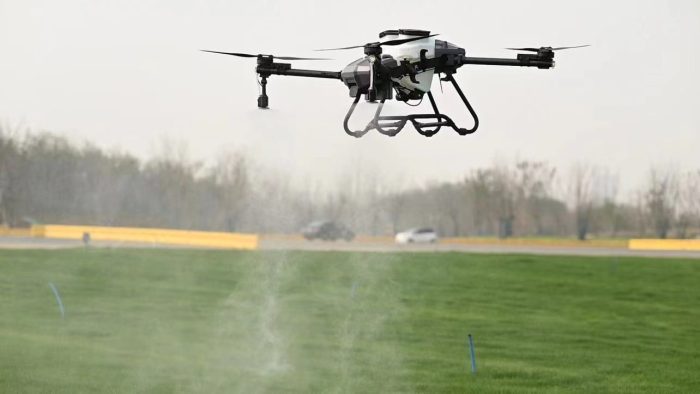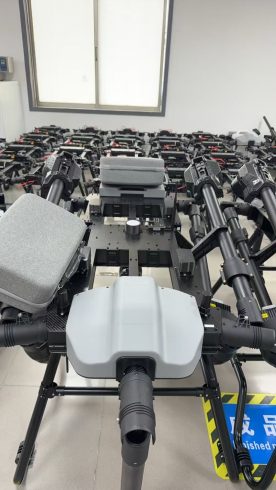![图片[1]-Drone Sprayer for Agriculture: Enhancing Crop Management with Precision UAVs-msoen](https://www.msoen.com/wp-content/uploads/2025/04/164e113f97214114-576x1024.jpg)
In the quest for higher yields and sustainable practices, the drone sprayer for agriculture has emerged as a game-changer. These specialized unmanned aerial vehicles (UAVs) combine aerial agility with advanced spraying systems to deliver precise, uniform application of pesticides, herbicides, and fertilizers. By integrating cutting-edge technology with proven agronomic principles, drone sprayers help farmers optimize inputs, reduce labor costs, and protect the environment.
What Is a Drone Sprayer for Agriculture?
A drone sprayer for agriculture is a UAV equipped with:
- Liquid tank and pump: Holds and pressurizes the spray solution.
- Spray nozzles: Designed for fine droplet distribution and adjustable flow rates.
- GPS/RTK navigation: Enables automated flight paths with centimeter-level accuracy.
- Obstacle-avoidance sensors: Ensures safe operation around trees, poles, and terrain.
- Remote controller or ground station: Allows real-time monitoring and manual override.
Key Advantages
- Precision Application
Targeted spraying reduces overlap and drift, ensuring chemicals reach only intended areas. - Labor Efficiency
A single operator can manage multiple acres in hours—what might take a team of workers days with backpack sprayers. - Reduced Chemical Usage
Accurate flow control minimizes over-application, lowering costs and environmental impact. - Versatility
Adjustable nozzles and flight parameters allow use in vineyards, orchards, rice paddies, and row crops. - Enhanced Safety
Remote operation keeps workers away from direct chemical exposure and difficult terrain.
Common Agricultural Applications
| Application | Benefit |
|---|---|
| Pesticide Spraying | Controls pests early, reduces crop loss |
| Fungicide Application | Prevents disease spread under humid conditions |
| Herbicide Coverage | Targets weeds without harming crops |
| Fertilizer Distribution | Boosts nutrient uptake and yields |
Selecting the Right Drone Sprayer
When choosing a drone sprayer for agriculture, consider:
- Payload Capacity: 10 L–30 L tanks suit small to large farms.
- Spray Width: Wider booms cover more ground but require stable flight.
- Flight Time: Longer battery life increases operational efficiency.
- Navigation Accuracy: RTK-equipped models support precision seeding and mapping.
- Durability: Weatherproof and corrosion-resistant materials extend service life.
- Software Integration: Compatibility with farm management platforms aids data-driven decisions.
Best Practices for Drone Spraying
- Pre-Flight Planning
- Map the field area and set waypoints using GIS tools.
- Calibrate nozzles and flow rates based on solution viscosity.
- Weather Considerations
- Operate at wind speeds below 5 m/s to minimize drift.
- Avoid spraying in direct sunlight during peak evaporation hours.
- Safety Protocols
- Maintain a safe distance from people, animals, and structures.
- Use personal protective equipment (PPE) when mixing chemicals.
- Post-Flight Maintenance
- Rinse tanks and nozzles thoroughly after each use.
- Inspect rotors and structural components for wear or damage.
Future Trends
- AI-Powered Targeting: Advanced cameras and machine learning will identify weeds or disease hotspots in real time.
- Swarm Spraying: Coordinated fleets of smaller drones working simultaneously to cover larger areas.
- Renewable Energy Integration: Solar-assisted charging stations to extend field endurance.
- Regulatory Evolution: Streamlined certification processes and new safety standards tailored to agricultural UAVs.
Conclusion
Adopting a drone sprayer for agriculture empowers farmers with unmatched precision, efficiency, and safety. From small family-run farms to large commercial operations, these UAVs redefine how we protect and nourish crops. By carefully selecting the right model, following best practices, and staying abreast of emerging technologies, growers can maximize returns, reduce environmental impact, and secure their competitive edge in the modern agricultural landscape.










暂无评论内容